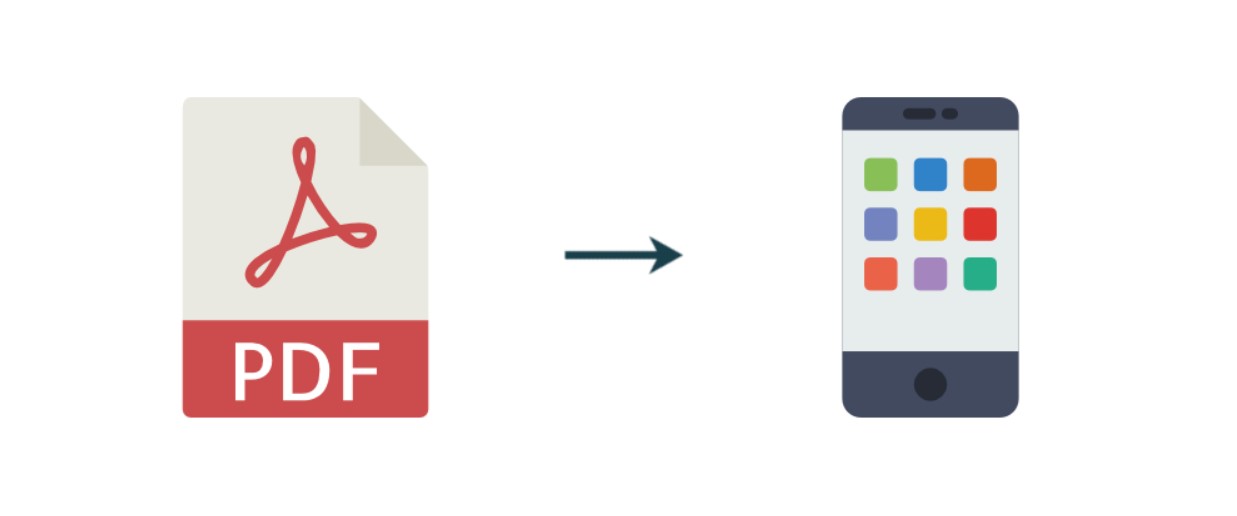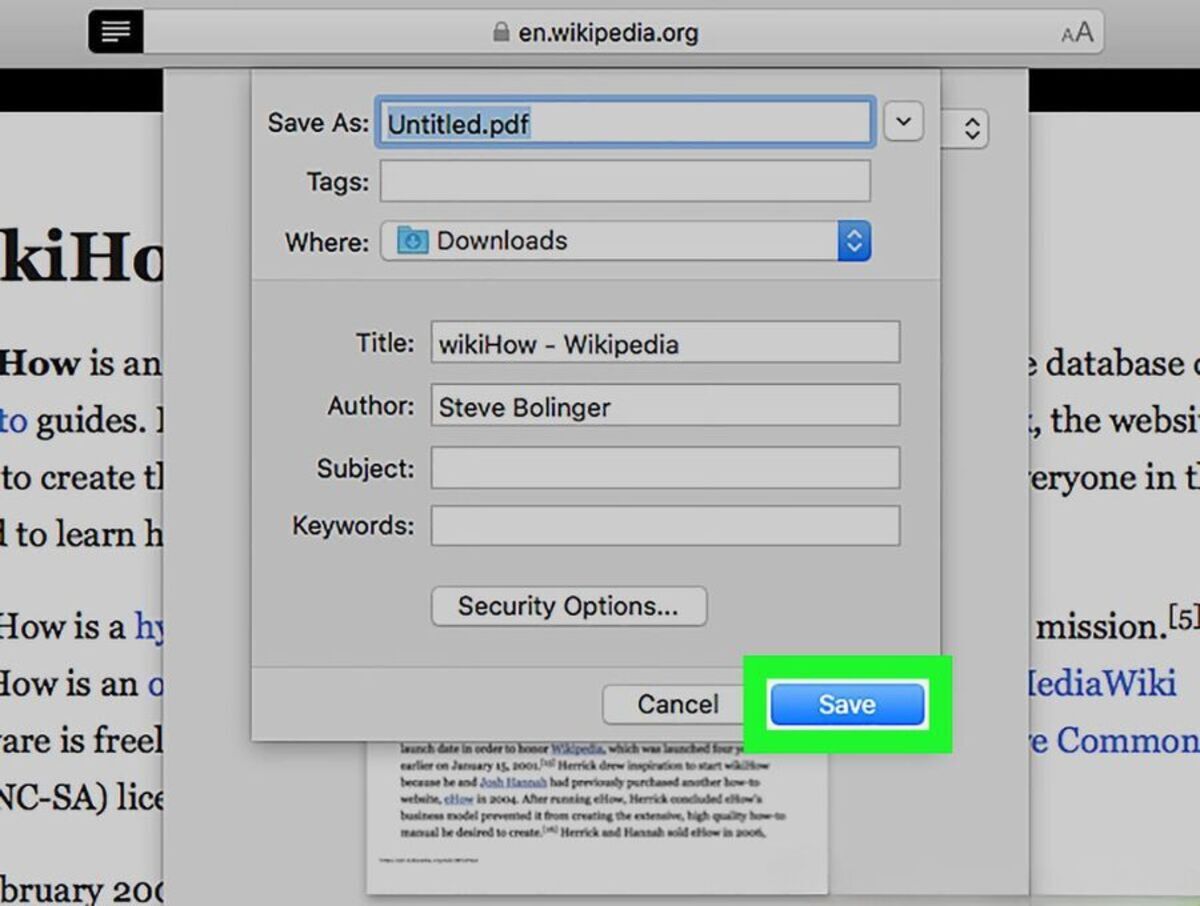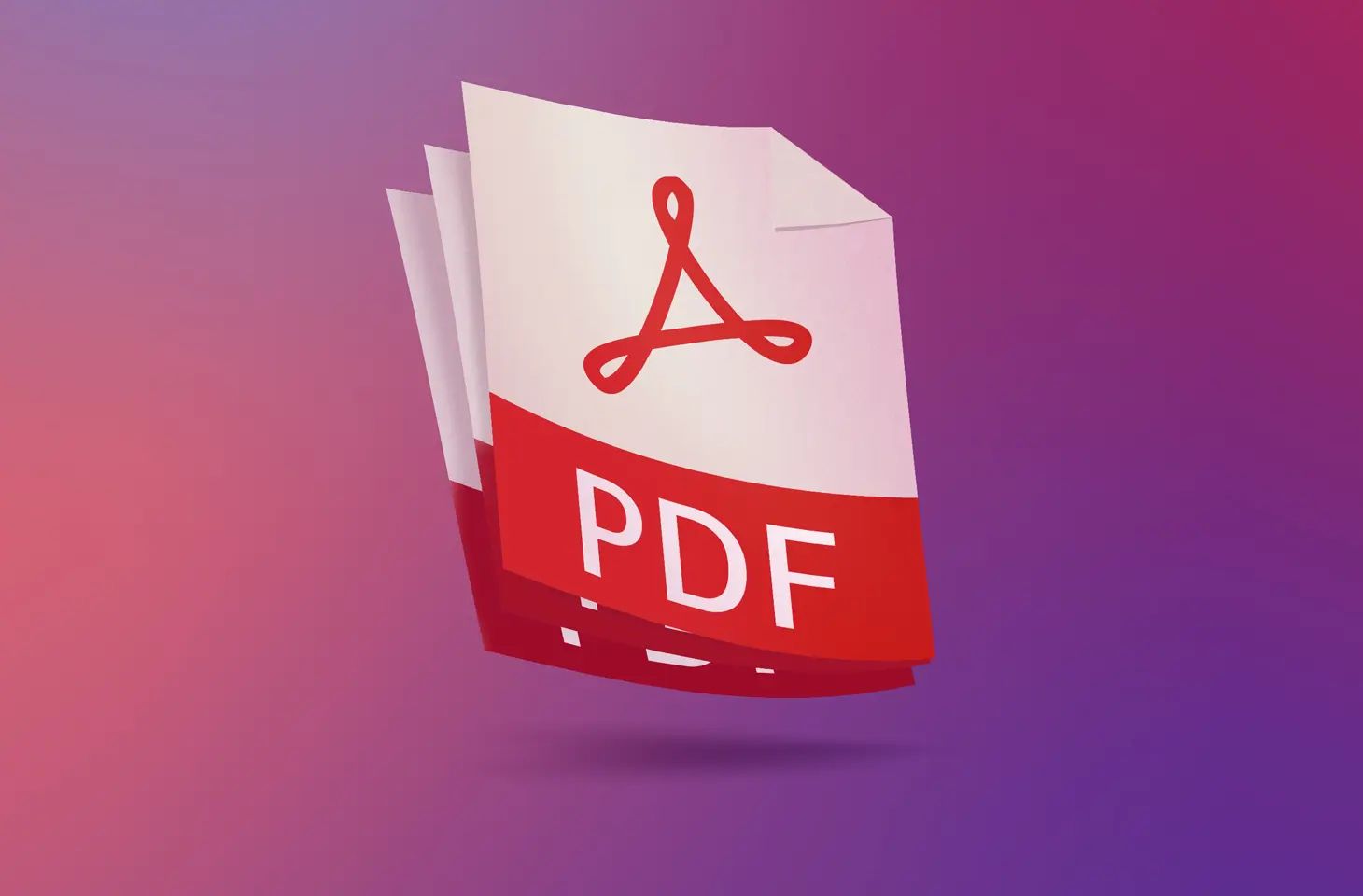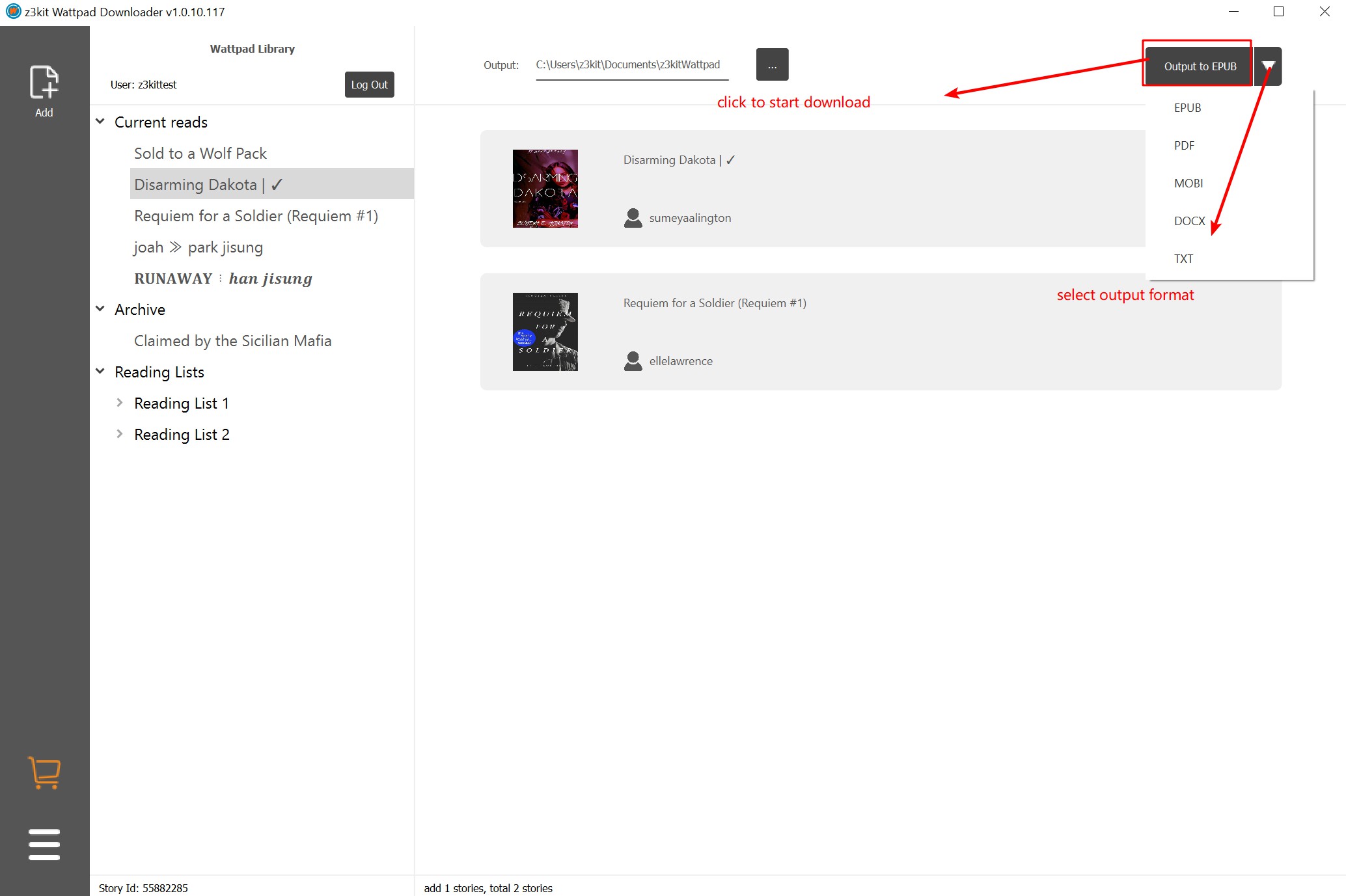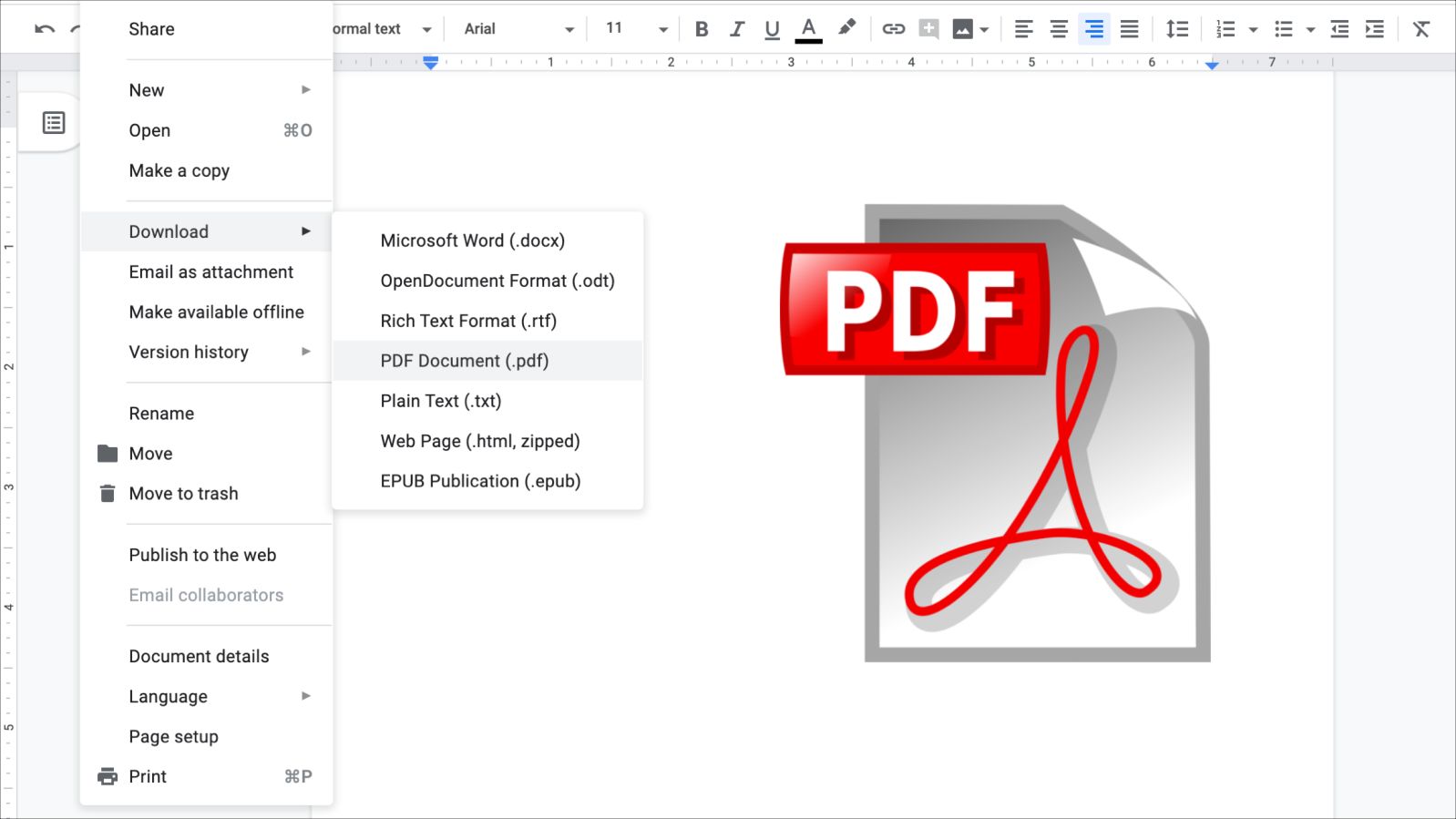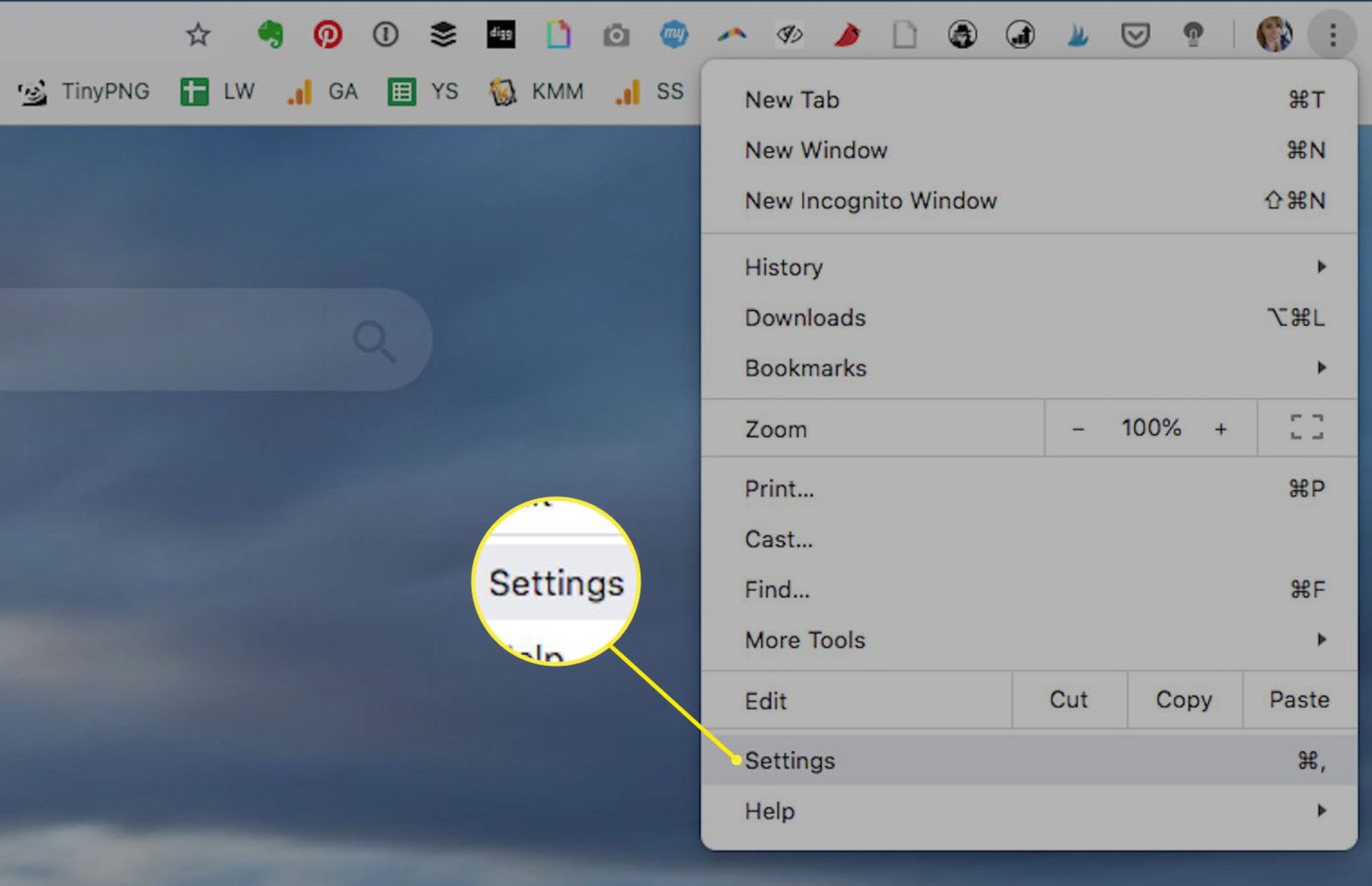Introduction
Welcome to our guide on how to download a PDF from a website. PDFs (Portable Document Format) are widely used for sharing documents that need to be preserved in their original format. Whether you need to download a research paper, an e-book, or a user manual, this step-by-step tutorial will help you save PDFs from any website with ease.
Downloading a PDF file from a website involves a few simple steps that can be completed in a matter of minutes. In this guide, we will walk you through each step, ensuring you have a clear understanding of the process. By the end, you will be well-equipped to save PDFs to your computer and access them offline whenever you need them.
Before we dive into the technical details, it’s important to note that downloading a PDF from a website is generally legal as long as you have proper authorization to access the content. It’s always a good practice to respect the copyright of the content you download and use it for personal or educational purposes only.
So, if you’re ready, let’s get started with step one: opening the website containing the PDF document you want to download.
Step 1: Open the website with the PDF document
The first step in downloading a PDF from a website is to open the webpage that contains the document. You can do this by launching your preferred web browser and typing or pasting the URL of the website into the address bar.
Once you have entered the website’s URL, press Enter or click on the Go button to load the webpage. It may take a few seconds for the webpage to load, depending on your internet connection speed.
Make sure you have a stable internet connection to ensure a smooth browsing experience. If your network connection is weak, you may experience delays in loading webpages or encounter interruptions during the download process.
If the PDF document is located on a specific page within the website, navigate to that page using any navigation menus, links, or search functions provided on the website. Look for any indicators that show the presence of a PDF file, such as a “Download PDF” button or a hyperlink with the “.pdf” file extension.
Remember, not all websites offer direct access to PDF files. Some websites may require you to perform additional actions, such as filling out a form or subscribing to a newsletter, before granting access to the PDF file. Be prepared to follow any instructions or fulfill any requirements specified by the website to ensure a successful download.
Once you have reached the webpage containing the PDF document, you’re ready to move on to the next step: locating the PDF link.
Step 2: Locate the PDF link
After opening the webpage containing the PDF document, your next task is to locate the link that leads to the PDF file. This link allows you to directly access and download the PDF onto your computer.
Here are a few common ways to identify the PDF link:
- Look for a clearly labeled button or hyperlink that says “Download PDF” or something similar. This is often the easiest and most straightforward method of locating the PDF link.
- Check for links or buttons that mention “PDF” or have the “.pdf” file extension. These links may be embedded within the text of the webpage or displayed separately.
- If the PDF document is embedded within the webpage, look for a toolbar or control panel that includes an option to download the file. This may be represented by a download icon or a dedicated “Save” button.
- In some cases, the PDF link may be disguised within a regular hyperlink or a clickable image. Carefully examine the webpage for any text or images that suggest a PDF download.
Keep in mind that the location and design of the PDF link can vary depending on the website’s layout and formatting. It may take a bit of exploration and scanning to find the correct link.
If you’re having trouble locating the PDF link, you can try using the browser’s “Find” or “Search” feature. Press Ctrl+F (Windows) or Command+F (Mac) to open the find bar, then type in keywords related to PDF or download to highlight relevant links on the webpage.
Once you have successfully identified the PDF link, you’re ready to proceed to step three: right-clicking on the PDF link to initiate the download.
Step 3: Right-click on the PDF link
With the PDF link in sight, it’s time to initiate the download process by right-clicking on the link. This action will bring up a context menu with various options specific to the browser you are using.
To right-click on a PDF link, follow these steps:
- Position your mouse cursor over the PDF link. This will highlight the link and display a small pointer icon.
- Press the right mouse button. This will trigger the context menu to appear.
If you are using a laptop or a device with a touchpad, you can achieve the same result by performing a two-finger tap on the link, or by tapping with two fingers on the touchpad while pressing the bottom-right corner of the touchpad.
Upon right-clicking on the PDF link, you will see a list of options. Among the available options, you will typically find:
- Save link as: This option allows you to specify a download location and save the PDF file to your computer. Selecting this option will open a file explorer or a download dialog box, prompting you to choose a folder to save the file in.
- Download linked file: This option initiates the download directly without displaying a prompt to choose a location. The file will be saved to your computer’s default download folder.
- Save target as: This option is similar to “Save link as” and allows you to specify a location to save the PDF file. Note that the wording may vary slightly depending on your browser.
Choose the appropriate option from the context menu based on your preferences. If you want to specify a specific folder or location to save the PDF file, select the “Save link as” or “Save target as” option. If you’re fine with the file being saved to the default download folder, choose “Download linked file” or a similar option.
Once you’ve made your selection, you’re ready to move on to step four: choosing a location on your computer to save the PDF file.
Step 4: Select “Save link as” or “Download linked file”
Once you have right-clicked on the PDF link, a context menu will appear with several options. Among these options, you will typically find “Save link as” or “Download linked file.” These options allow you to choose the desired location on your computer to save the PDF file.
If you select the “Save link as” option, a file explorer or download dialog box will pop up, prompting you to specify a folder or directory to save the PDF file. You can navigate through your computer’s file system and choose a location that suits your preference. It is recommended to select a folder that is easy to locate later on.
On the other hand, selecting “Download linked file” or a similar option initiates the download directly without displaying a prompt to choose a location. The PDF file will be saved to your computer’s default download folder. This option is convenient if you want to quickly save the PDF file without specifying a specific folder.
When selecting the save location, keep in mind that it is essential to choose a location where you can easily find and access the downloaded PDF file later on. You may want to consider creating a dedicated folder for downloaded PDFs to keep them organized and easily accessible.
Additionally, it is always a good practice to verify that the chosen save location has sufficient space to accommodate the PDF file. PDF files can vary in size, and choosing a location with enough available storage ensures a successful download.
Once you have selected “Save link as” or “Download linked file” and chosen the appropriate save location, click “Save” or “OK” to start the downloading process. Your browser will begin to save the PDF file to the specified location on your computer.
Now that you have successfully chosen a location on your computer to save the PDF file, it’s time to move on to step five: confirming the completion of the download.
Step 5: Choose a location on your computer to save the PDF file
After selecting “Save link as” or “Download linked file,” you will be prompted to choose a location on your computer where you want to save the downloaded PDF file. This step allows you to specify the folder or directory where the PDF file will be stored.
When choosing a location to save the PDF file, consider the following:
- Selecting a specific folder: If you want to save the PDF file to a specific folder or directory, click on the folder icon or browse button in the file explorer or download dialog box. Navigate through your computer’s file system and select the desired location. You can choose a default folder like “Downloads,” create a new folder dedicated to PDF files, or save it in a folder that makes the most sense for your organization.
- Using the default download location: If you prefer to use the default download location set by your browser, you can simply click “Save” or “OK” without changing the save location. The PDF file will be saved to the default folder, such as “Downloads” or “Documents.”
It is important to choose a location on your computer that is easy to find and access later. Consider selecting a folder that is organized and logical, making it easier for you to locate and manage your downloaded PDF files.
Make sure that the chosen location has enough available storage to accommodate the size of the PDF file. If your computer’s storage is running low, you may want to consider selecting a different location with more space or freeing up storage by deleting unnecessary files.
Once you have chosen the desired location, click “Save” or “OK” to initiate the download process. Depending on the size of the PDF file and the speed of your internet connection, the download may take a few seconds or longer.
Congratulations! You have successfully chosen a location on your computer to save the PDF file. In the next step, we will cover how to open the saved PDF file to confirm the download.
Step 6: Click “Save” or “OK”
After selecting the desired location on your computer to save the PDF file, the next step is to click the “Save” or “OK” button to begin the download process. This action confirms your chosen save location and initiates the actual download of the PDF file.
Depending on your web browser and its settings, you may see a progress bar or indicator showing the download progress. This gives you an idea of how much time is remaining until the download is complete.
It is important to have a stable internet connection during the download process to ensure a smooth and uninterrupted transfer of the PDF file. If you experience any network issues or interruptions while the file is downloading, you may need to restart the download or troubleshoot your internet connection.
Be patient while the PDF file is being saved to your chosen location on your computer. Larger files may take longer to download, while smaller files should be completed fairly quickly.
Once the download is complete, your web browser may present a notification or display a confirmation message indicating that the PDF file has been successfully saved. If you’re using a browser with a built-in download manager, you can usually find a list of downloaded files by clicking on a dedicated downloads icon or through a menu option.
Now that you have clicked “Save” or “OK,” the PDF file has been successfully downloaded and saved to the specified location on your computer. The next step is to open the saved PDF file to confirm that the download was successful.
Step 7: Open the saved PDF file to confirm the download
Once you have successfully downloaded the PDF file and saved it to your computer, the final step is to open the saved file to confirm that the download was successful.
Locate the folder or directory where you saved the PDF file. If you saved it to the default download location, such as the “Downloads” folder, you can typically find it by navigating to that folder using your computer’s file explorer.
Double-click on the PDF file to open it. Your computer will launch the default PDF viewer or any other application that is set to handle PDF files. Common PDF viewers include Adobe Acrobat Reader, Preview (on Mac), or Microsoft Edge (on Windows 10).
If the PDF file opens without any issues, it indicates that the download was successful. You can navigate through the document, view its contents, and even print or save it to a different location if needed.
However, if you encounter any issues opening the PDF file, it may indicate a problem with the downloaded file or compatibility issues with your PDF viewer. In such cases, you can try the following troubleshooting steps:
- Ensure that you have the latest version of a PDF viewer installed on your computer.
- Try opening the PDF file with a different PDF viewer to see if the issue persists.
- If you suspect a problem with the downloaded file, try downloading the PDF again from the website.
- Check if there are any error messages or warnings displayed. They may provide insight into the issue and guide you towards a solution.
If you continue to have trouble opening the PDF file, it is advisable to reach out to the website or the source of the PDF for further assistance or troubleshooting steps.
By opening the saved PDF file, you can confirm that the download was successful and ensure that the content is accessible for your use.
Additional Tips for Downloading PDFs from Websites
While the steps outlined above cover the basic process of downloading a PDF from a website, here are some additional tips to enhance your experience:
- Be cautious of third-party websites: When downloading PDFs, be wary of websites that are not reputable or secure. Stick to trusted sources to ensure the safety of your computer and the integrity of the downloaded files.
- Check for alternative download options: Some websites may offer multiple formats for downloading documents, including PDF. Look for options like “Download as PDF” or “Convert to PDF” if they are available.
- Use a download manager: Consider using a download manager or browser extension that can help manage and organize your downloads. These tools often provide additional features like download acceleration, pause/resume functionality, and batch downloading.
- Enable pop-ups if necessary: Some websites may open the PDF file in a new browser tab or window. If your browser has a pop-up blocker enabled, you may need to allow pop-ups for the specific website to access the PDF.
- Take note of password-protected PDFs: Some PDF files may be password-protected, requiring you to enter a password to access the content. Make sure you have the necessary password or authorization to open these files.
- Consider using a PDF downloader tool: If you frequently find yourself needing to download multiple PDFs from various websites, you might explore using specialized PDF downloader tools. These tools can streamline the process and provide additional features for managing your downloads.
- Keep your PDF viewer up to date: Regularly update your PDF viewer software to ensure compatibility with the latest PDF formats and to benefit from any security patches or performance improvements.
- Pay attention to file size: Before downloading a PDF, take note of its file size. Larger files may take longer to download, especially if you have a slower internet connection. Consider this factor when choosing to download PDFs, especially on mobile devices with limited storage space.
By following these tips, you can optimize your PDF downloading process and ensure a smooth and secure experience.
Conclusion
Downloading a PDF from a website is a straightforward process that allows you to save important documents for offline access. By following the steps outlined in this guide, you can successfully download PDFs and have them readily available on your computer whenever you need them.
Remember to open the website containing the PDF, locate the PDF link, right-click on the link, and select “Save link as” or “Download linked file” to begin the download. Then, choose a location on your computer to save the PDF file and click “Save” or “OK” to initiate the download process. Once the download is complete, open the saved PDF file to confirm the successful download.
Additionally, keep in mind the tips provided to enhance your PDF downloading experience. Be cautious of third-party websites, consider alternative download options, and use helpful tools such as download managers or specialized PDF downloader tools. Stay aware of password-protected PDFs, keep your PDF viewer software up to date, and pay attention to file sizes to optimize your downloading process.
By following these guidelines and using these tips, you can effortlessly download PDFs from websites and have access to valuable content at your fingertips. Whether you’re conducting research, reading e-books, or accessing important documents, downloading PDFs ensures that you can access and refer to them, even when you’re unable to connect to the internet.
So, next time you come across a PDF on a website that you want to save, follow these steps and enjoy the convenience of having the document on your computer for offline use.







